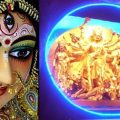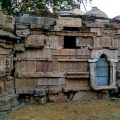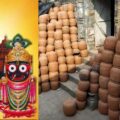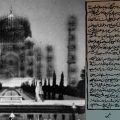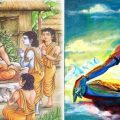Mahalaya: Bridging Time and Tradition in Bengal’s Spiritual Tapestry
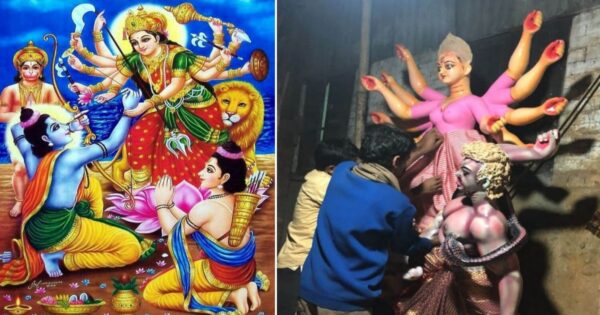 In the vibrant tapestry of Bengal’s cultural and spiritual heritage, the reverence for Devi Durga transcends the boundaries of time and history. It starts with Mahalaya. Beyond the grandeur of Durga Puja, there is a remarkable tale of devotion and valor that resides in the hearts of Bengalis—the story of Shri Ram Chandra’s Akal Bodhan, the untimely awakening of the Goddess.
In the vibrant tapestry of Bengal’s cultural and spiritual heritage, the reverence for Devi Durga transcends the boundaries of time and history. It starts with Mahalaya. Beyond the grandeur of Durga Puja, there is a remarkable tale of devotion and valor that resides in the hearts of Bengalis—the story of Shri Ram Chandra’s Akal Bodhan, the untimely awakening of the Goddess.
In the epic Ramayana, Shri Ram, the seventh avatar of Lord Vishnu, invoked Devi Durga to seek her divine blessings in his quest to rescue his beloved wife, Sita, from the demon king Ravana. However, the auspicious time for invoking the goddess had passed. Undeterred by time constraints, Shri Ram performed a unique puja known as Akal Bodhan, or the “untimely awakening” of the goddess. With profound reverence, he crafted a Devi moorti from the mud of the Ganges’ banks and, following sacred scriptures, invoked the Goddess. This act marked the beginning of the Devi Paksh and symbolized a powerful spiritual connection.
Ram’s Akal Bodhan is a testament to unwavering faith, transcending time and convention. It reflects the profound way in which Bengalis connect with their beloved Devi and demonstrates the extraordinary lengths one can go to seek divine guidance in overcoming life’s challenges.
On Mahalaya, a remarkable transformation unfolds in Bengal, a region renowned for its rich cultural tapestry and spiritual depth. As the sun sets, a sense of calm blankets the landscape, soon stirred by temple bells and the enchanting aroma of incense. Families gather along the riverbank for the Tarpan ritual. This practice, observed before Mahalaya, emphasizes the thin boundary between the living and the departed, enabling the seeking of ancestors’ blessings and guidance. It reinforces the importance of one’s lineage and connection with the past.
Tarpan is a prelude to the grand theatrical performance of Mahalaya, marking the sacred hour when Devi Durga’s descent begins. This signifies the triumph of good over evil and heralds the celebration of Durga Puja, one of Bengal’s most significant festivals. The anticipation of Devi Durga’s arrival fills the hearts of Bengalis with excitement and devotion.
One of the most iconic elements of Mahalaya is the “Mahisasur Mardini,” first broadcast in 1931. It features the enchanting Chandi Path narrated by Birendra Krishna Bhadra. His resonant voice bridges generations, creating a powerful spiritual experience for every Bengali. His narration transforms the battle between Mahishasura and Devi Durga into a symphony, uniting past, present, and future in a cosmic circle.
Mahalaya unites the spirits of ancestors, the divine grace of Devi Durga, and the cultural heritage of Bengal into a spiritual tapestry. Families performing Tarpan not only honor their ancestors but also pass down a tradition that has endured over time. Each gesture, mantra, and note of the Mahisasur Mardini carries a sense of continuity, keeping alive the beliefs and values integral to Bengal’s identity.
Mahalaya is not just a day on the calendar; it is a cultural phenomenon symbolizing the enduring strength of Bengali traditions, encapsulating history, faith, and artistic expression. The spirit of Mahalaya is carried forward through generations, reminding us of the enduring power of tradition and the profound connection between the living and the departed.
In the quiet predawn hours of Mahalaya, as Bengal awakens to the spiritual energy in the air, the sacred rituals, music, and the voice of Birendra Krishna Bhadra create an experience that transcends time and place. It’s a day when the past is honored, the present celebrated, and the future embraced with hope and faith. Mahalaya is a transformation that reminds us of the enduring power of tradition and the profound connection between the living and the departed.
Featured image courtesy: Left image from Google; right image clicked by Raja Sinha.

